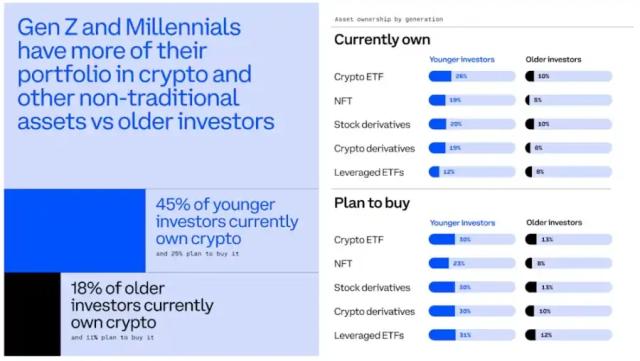Written by: KarenZ, Foresight News
This week, Bryan Steil, chairman of the US Digital Assets Subcommittee, and French Hill, chairman of the House Financial Services Committee, formally proposed the draft of the "Stablecoin Act" or the "STABLE Act of 2025", establishing a framework for issuing and operating payment stablecoins in the United States. French Hill stated, "This bill is the result of months of collaboration with stakeholders and members in this and the previous Congress."
This article, through 15 common questions and answers, will provide a comprehensive understanding of the bill's purpose, requirements for issuers and custodians, and regulatory compliance matters.
Who Proposed It? What Is Its Purpose?
Who Proposed the Bill?
The draft bill, also known as the "2025 Stablecoin Transparency and Accountability Promotion Ledger Economy Act", was proposed by Representatives Bryan Steil and French Hill. Bryan Steil is the chairman of the House Administration Committee and the chairman of the Crypto Subcommittee of the House Financial Services Committee. French Hill is the new chairman of the House Financial Services Committee.
What Type of Stablecoins Does It Primarily Regulate?
The bill aims to ensure the transparency and accountability of payment stablecoins through a regulatory framework, overseeing the issuance and circulation of payment stablecoins, protecting consumers, ensuring financial stability, preventing illegal financial activities, and promoting the application of stablecoins in a better ledger economy.
What Is a Payment Stablecoin?
The bill defines a payment stablecoin as:
A digital asset intended to be used as a means of payment or settlement
Denominated in national currency
The issuer is obligated to exchange, redeem, or repurchase at a fixed monetary value
Not a national currency or a security issued by an investment company
Stablecoin Issuance
Who Can Be Authorized to Issue Payment Stablecoins?
Only "Permitted Payment Stablecoin Issuers" can issue stablecoins, including:
Approved insured depository institution subsidiaries
Federally certified non-bank payment stablecoin issuers
State-certified payment stablecoin issuers
What Are the Core Requirements for Issuing Payment Stablecoins?
Reserve Requirements: Issuers must hold reserve assets of at least 100% of the outstanding stablecoin volume (1:1 backed), primarily including US dollar cash, Federal Reserve Bank deposits, demand deposits at insured depository institutions, short-term US Treasury securities (maturing within 93 days), specific overnight repurchase agreements, and money market funds investing in the above assets.
Redemption Policy: Publicly disclose redemption policy and establish timely redemption procedures.
Transparency: Publish monthly reserve composition reports, checked by independent registered accounting firms, with written certification from the CEO and CFO.
Consequences of False Certification:
Intentional Violation: Up to 20 years imprisonment + $5 million fine;
Negligent Violation: Up to 10 years imprisonment + $1 million fine.
Capital and Risk Management: Comply with capital, liquidity, and risk management requirements (including operational, compliance, IT, cybersecurity) set by the primary federal payment stablecoin regulatory agency.
Business Limitations: Primarily limited to issuing, redeeming stablecoins, managing related reserves, and providing direct support activities.
Interest Prohibition: Cannot pay interest or earnings to stablecoin holders.
Custody
What Qualifications Are Required for Custodial Institutions?
Only financial institutions (such as banks and trust companies) regulated by federal or state authorities and meeting relevant standards can provide custodial services.
What Are the Custody Requirements?
Customer asset segregation is required, and mixing with own funds is prohibited.
Customer assets take priority over the issuer's creditors.
Incorporating customer assets into the issuer's balance sheet is forbidden.
Regular submission of custody operation process descriptions to regulatory agencies.
Regulation and Compliance
Who Is Responsible for Regulating Stablecoin Issuers?
The primary federal payment stablecoin regulatory agencies are the Office of the Comptroller of the Currency (OCC), the Federal Reserve, the Federal Deposit Insurance Corporation (FDIC), and the National Credit Union Administration (NCUA). Specifically:
For insured depository institutions (non-credit unions) and their subsidiaries: Appropriate federal banking agencies
For insured credit unions and their subsidiaries: National Credit Union Administration
For federally certified non-bank payment stablecoin issuers: Office of the Comptroller of the Currency
How Can States Establish Their Own Stablecoin Regulatory Systems?
State-qualified payment stablecoin issuers can only issue payment stablecoins under the regulation of the state's payment stablecoin regulatory agency. State regulatory agencies can submit certification to the US Treasury, proving that their regulatory system meets or exceeds federal standards.
What Regulations Exist for Foreign Stablecoin Issuers?
The bill allows foreign payment stablecoins to circulate in the US, but under strict conditions: the regulatory system must be equivalent to the US, and issuers must agree to reporting and inspection requirements set by US regulatory agencies. The Treasury Secretary is responsible for assessing and coordinating international cooperation and publicly updating the list of qualifying countries.
If the issuer is a non-bank entity, the Office of the Comptroller of the Currency will determine; if the issuer is a bank or its subsidiary, the Federal Reserve will determine.
Penalties for Violating the Act
What Penalties Will Payment Stablecoin Issuers Face for Violating the Stablecoin Act?
According to the "STABLE Act of 2025", if stablecoin issuers (including permitted issuers and their affiliates) or unauthorized issuers violate the act, they will face a series of severe penalties enforced by the corresponding federal or state regulatory agencies:
1. Regulatory Enforcement Measures:
Suspension or Revocation of Issuance Qualification: If the primary federal payment stablecoin regulatory agency determines that the issuer or its institutional affiliates seriously violate this act, they can prohibit the permitted issuer from continuing to issue payment stablecoins.
Cease and Desist Order: If the primary federal payment stablecoin regulatory agency has reasonable grounds to believe that the issuer or its institutional affiliates are violating, have violated, or are attempting to violate this act, regulations, orders, written agreements, or conditions, they can order them to stop and terminate such violations or practices and take positive action to correct the situation caused by the violation.
Removal and Prohibition from Participation: The primary federal payment stablecoin regulatory agency can remove the issuer's institutional affiliates or prohibit them from further involvement in the issuer's or any permitted issuer's affairs. Preconditions include determining that the affiliate directly or indirectly violated or attempted to violate this act, regulations, or orders; or violated anti-money laundering laws in the US Code.
2. Civil Penalties
Unauthorized Issuance: Any entity issuing payment stablecoins without approval (and affiliated parties knowingly participating) will be subject to civil fines of up to $100,000 per day, with the fine period covering each day the payment stablecoins remain outstanding.
First-Level Violation: For permitted issuers or their affiliates, substantial violations of the act, related regulations, orders, or written agreements/conditions will result in civil fines of up to $100,000 per day.
Second-Level Violation: If permitted issuers or their affiliates intentionally participate in violations of the act or related regulations/orders, in addition to potential first-level fines, they may face additional civil fines of up to $100,000 per day.
3. Criminal Penalties
False Certification: If the CEO or CFO of an issuer submits a monthly reserve certification report containing significant false information, they will face criminal prosecution:
Knowingly Filing False Report: Fine up to $1 million, imprisonment up to 10 years, or both.
Intentionally Submitting False Report: Fine up to $5 million, imprisonment up to 20 years, or both.
False Statement Protection Status: If falsely claiming stablecoin is guaranteed by the U.S. government or FDIC/NCUA insurance, it will be prosecuted under existing laws.
Civil Penalties: Unauthorized issuance or violation of sale regulations, up to $100,000 per day; substantial violations up to $100,000 per day, with an additional $100,000 for knowing violations.
Criminal Penalties: For false certification of reserve funds, maximum fine of $5 million and 20 years imprisonment.
Regulatory Measures: Suspension or revocation of issuance license, cease and desist orders, removal of associated parties.
Misleading Penalties: Pursued under federal law for false insurance claims.
Temporary Measures: Issuance of temporary stop orders in emergency situations.
Others
Are Payment Stablecoins Considered Securities?
The bill explicitly excludes payment stablecoins from the definition of "securities".
How to Ensure Stablecoin Interoperability?
Federal regulators will assess and potentially establish standards with institutions like the National Institute of Standards and Technology (NIST) to promote payment stablecoin compatibility and interoperability.
When Will Regulatory Authorities Issue Implementation Rules?
Within 180 days after the bill's enactment (approximately 6 months), the main federal payment stablecoin regulatory agencies must jointly publish implementation rules for payment stablecoin issuance requirements.
When Does the Bill Take Effect?
For any non-licensed payment stablecoin issuer, issuing payment stablecoins is illegal from the date of the bill's enactment.
For custodial intermediaries, providing or selling payment stablecoins not issued by a "licensed payment stablecoin issuer" will be prohibited 2 years after the bill's enactment, giving the market a longer transition period.
Procedures for approving deposit-taking institutions or non-bank entity subsidiaries to issue stablecoins will take effect on the earlier of:
12 months after the bill's enactment;
120 days after the main federal payment stablecoin regulatory agencies publish the final regulations implementing Section 5.
The "endogenous collateral stablecoin ban" takes effect immediately upon the bill's enactment and continues for 2 years.
It should be noted that the draft bill has been submitted to the House Financial Services Committee and will undergo formal review and modification next Wednesday (April 2), with the final decision on whether to advance to a full House vote, coordinate with the Senate version, and ultimately be passed by both chambers and sent to the President for signature.







